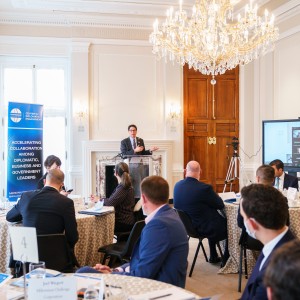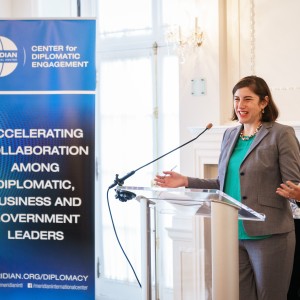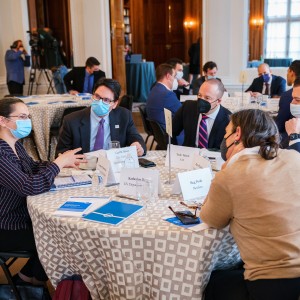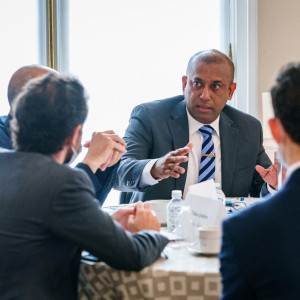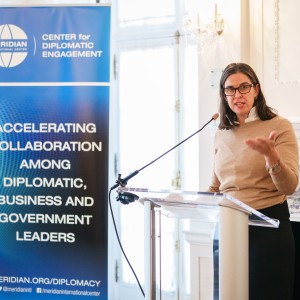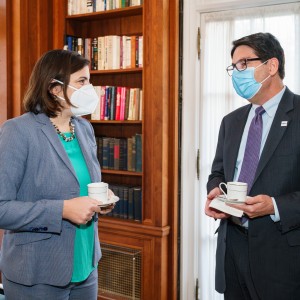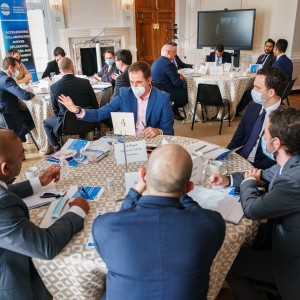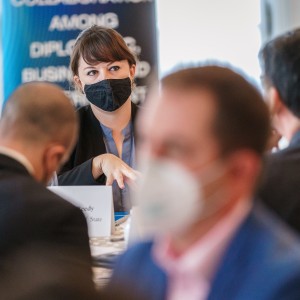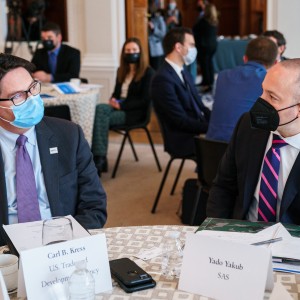Top Takeaways on U.S. Foreign Assistance Landscape
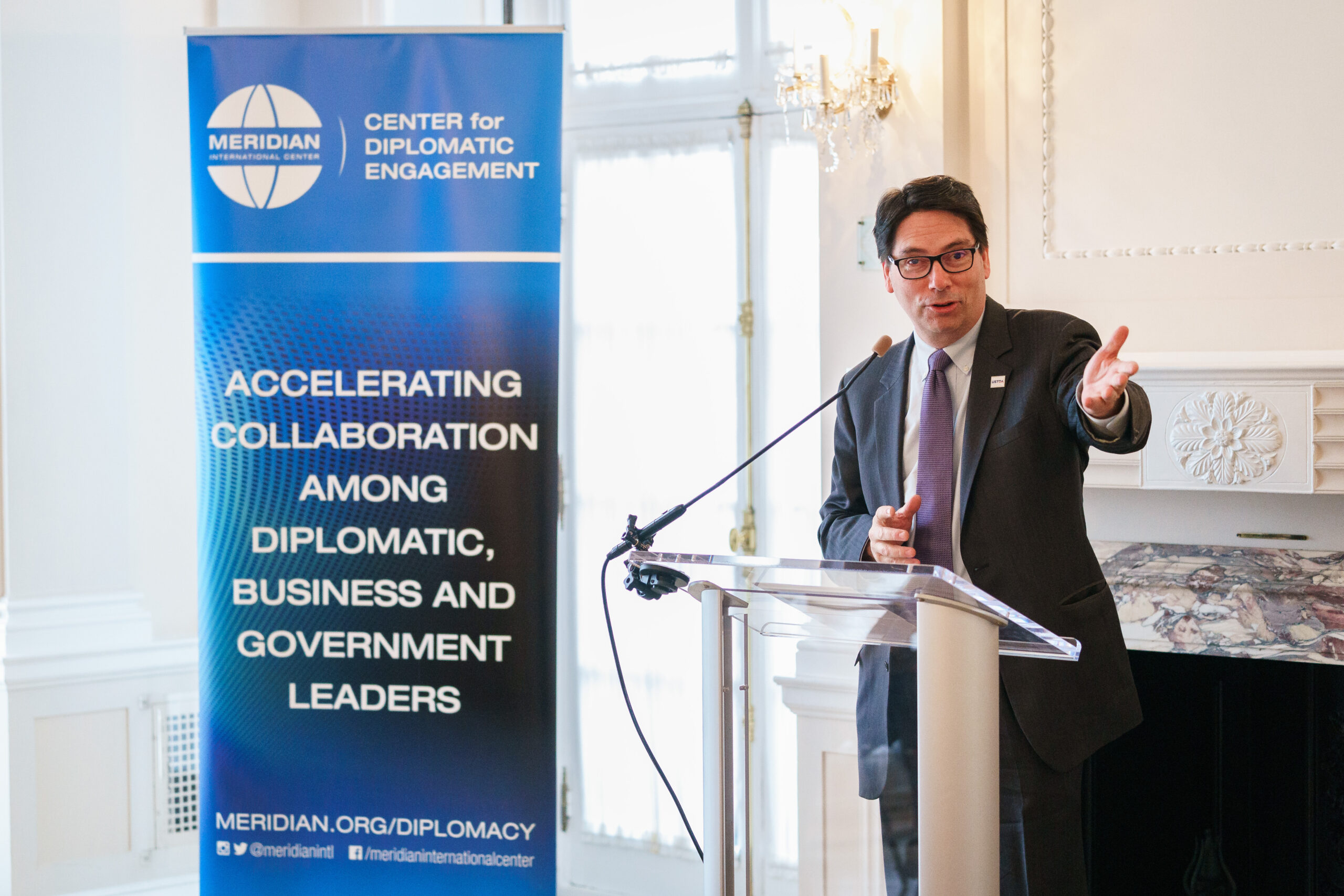
With more than 20 federal agencies providing foreign assistance to support a huge range of interests, it can be dizzying for foreign governments to identify how they can partner with the U.S. government to meet shared goals.
In order to provide Washington-based diplomats with an understanding as to how they can best work with U.S. government agencies, on Monday, November 15, Meridian hosted its latest hybrid Diplocraft event on Understanding U.S. Foreign Assistance. The event featured speakers Dr. Dafna Rand, Director of the Office of Foreign Assistance at the U.S. State Department, and Carl Kress, Regional Director at the U.S. Trade and Development Agency, along with informative roundtable discussions with participants. Attendees included diplomats from 16 embassies and government representatives from the Millennium Challenge Corporation, U.S. Development Finance Corporation, U.S. Trade and Development Agency, U.S. Department of State, U.S. Trade and Development Agency, U.S. African Development Foundation, U.S. Department of Labor and the U.S. Agency for International Development.
Here are our top takeaways from the event:
1. The U.S. role as a global leader
The United States is the biggest donor of foreign aid in the world, with Congress appropriating around $40 billion of taxpayer funds annually through various government agencies. For this reason, The Office of U.S. Foreign Assistance was founded 15 years ago to coordinate multiagency assistance. The office recently created an interactive foreign assistance website to show where each U.S. government agency has projects around the world, along with the amount invested, objectives, sector and managing agency for each project in order to increase transparency. The aid provided through these agencies is critical to the U.S.’s role as a global leader.
2. How do U.S. funding agencies differ?
Each agency has its own processes, criteria, and method for allocating their funding. For example, the United States Agency for International Development (USAID) leads the U.S.’s international development and humanitarian efforts. U.S. African Development Foundation (USADF)invests directly in African grassroots businesses and social entrepreneurs, focusing on community-led and local initiatives. Millennium Challenge Corporation (MCC) provides grants to countries based on a scorecard to determine whether a country meets MCC’s five-year compacts or smaller threshold programs. U.S. International Development Finance Corporation (DFC) is a development bank that partners with the private sector to fund solutions to challenges in the developing world. The Export-Import Bank of the United States (EXIM) is the official U.S. export credit agency that facilitates the export of U.S. goods and services when private sector lenders are unable or unwilling to provide financing.
3. Shifting Priorities
Many U.S. international development priorities have remained consistent across administrations, including a strong emphasis on combating global corruption. The U.S. has invested heavily in providing nations with transparent and accountable governance networks. Under the Biden administration, there is an increased focus on climate matters, cybersecurity, and infrastructure. USAID Administrator Samantha Power recently shared this global development vision at Georgetown University.
4. Making Good Ideas a Reality
The U.S. Trade and Development Agency USTDA helps companies create U.S. jobs through the export of U.S. goods and services for priority infrastructure projects in emerging economies. Current initiatives include the Global Partnership for Climate-Smart Infrastructure, which connects U.S. industry to major clean energy and transportation infrastructure projects in emerging markets, Making Global Local, which helps share and support new global opportunities at the local level and the Global Procurement Initiative, which educates public officials in emerging markets on how to establish procurement practices.
5. How can Washington-based diplomats find the right agency and official to request foreign assistance?
Not only are there many federal agencies involved in foreign assistance, but there are often multiple agencies for any given area. One way is to reach out to your desk officer at the State Department about which agencies deal with the issue at hand. A second option to locate the right office is to have your foreign ministry directly approach the U.S. embassy in your capital city to make the request, as they will have staff who can direct you to the right federal office or offices. Of course, the Meridian Center for Diplomatic Engagement is also available to help direct you to the appropriate channels.
For additional information on U.S. Foreign Assistance please visit our resources page.
As part of the Diplocraft series, Meridian hosts several “How Washington Works” programs throughout the year. Previous programs have focused on sanctions, lobbying, Congress, the State Department, and think tanks. If you have an idea for a program theme that would better help you as a diplomat better understand Washington, please let us know by emailing MCDE@meridian.org.
Project summary
| Top Takeaways on U.S. Foreign Assistance Landscape | November 2021 | |
|---|---|
| Number of Attendees: | 42 |
| Regions: | Africa, Europe and Eurasia, Western Hemisphere, Near East and North Africa, South and Central Asia |
| Countries: | Botswana, Egypt, Jordan, Paraguay, Sri Lanka, Lebanon, Romania, Singapore, Switzerland, Canada, Nigeria, Jamaica, Ukraine |
| Impact Areas: | Foreign Policy, Governance and Transparency |
| Program Areas: | Diplomatic Engagement |
| Partners: | Private Sector |
